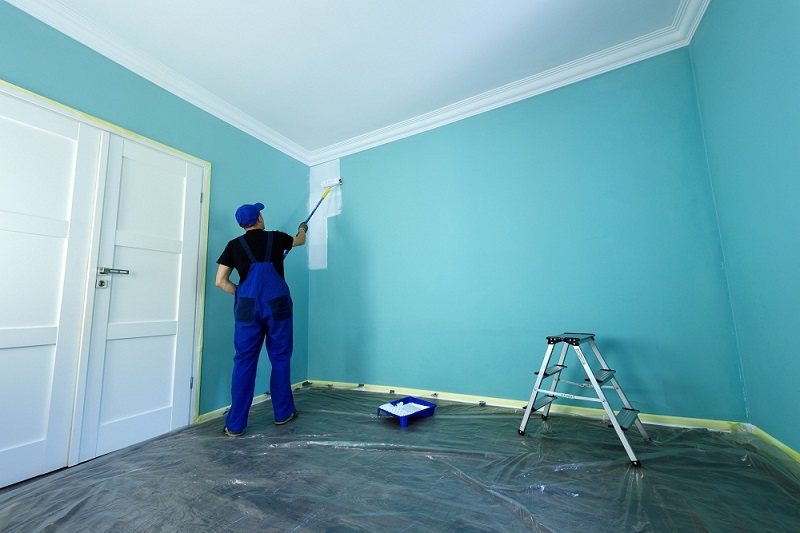Hey there, weekend warrior! Ready to give your house a fresh new look without spending weeks on end covered in paint? Well, you’re in luck because I’m here to guide you through the process of painting your house in just one weekend. We’re talking about transforming your humble abode into a masterpiece that’ll have the neighbors green with envy.
Why Paint Your House?
Before we dive into the nitty-gritty of house painting, let’s talk about why you might want to embark on this adventure. A freshly painted house not only looks fantastic but also adds value to your property. It’s like giving your home a facelift and a boost in its curb appeal.
Plus, the sense of accomplishment you’ll feel once you’re done is priceless. So, grab your paintbrush and let’s get started!
Step 1: Gather Your Supplies
First things first, let’s assemble our painting arsenal. You don’t want to be halfway through the job and realize you’re missing a crucial tool. Here’s what you’ll need:
Materials:
- Paint: Obviously, you can’t paint without paint! Choose high-quality exterior paint in the color of your choice. Consider paint with built-in primer to save time.
- Paint Brushes and Rollers: Get a variety of sizes to cover different surfaces. A roller will make large areas a breeze, while brushes are perfect for edges and trim.
- Paint Trays: These are essential for holding your paint while you work.
- Painter’s Tape: Use this to protect areas you don’t want to paint, like window frames and door handles.
- Drop Cloths: Cover your floors and plants to prevent splatters and spills.
- Sandpaper: For smoothing rough surfaces before painting.
- Caulk and Caulking Gun: Seal any gaps or cracks in your walls or trim.
- Ladder: To reach high spots safely.
- Bucket and Soapy Water: For cleaning brushes and rollers.
Safety Gear:
- Safety Glasses: Protect those peepers from splatters.
- Dust Mask: Keep the paint fumes out of your lungs.
- Gloves: Keep your hands clean and protected.
Step 2: Prep Your House
Now that you’ve got your gear, it’s time to prepare your canvas. Think of your house as a blank canvas, and prep work is like priming the canvas before painting a masterpiece.
Clean It Up:
Start by giving your house a good wash. Use a pressure washer or a hose with a high-pressure nozzle to remove dirt, grime, and loose paint. This step is crucial because paint adheres better to a clean surface.
Scrape and Sand:
Inspect your exterior for any peeling or flaking paint. Scrape away the loose bits and sand the surface until it’s smooth. This is a bit of elbow grease but totally worth it for a professional finish.
Repair Any Damage:
Check for any holes or cracks in the walls or woodwork. Fill them with caulk or putty and sand them down once dry.
Tape and Protect:
Use painter’s tape to protect windows, door frames, and anything else you don’t want to paint. Lay down your drop cloths to protect your floors and plants.
Step 3: Choose Your Battle Plan
Before you dive into painting, you’ll need to decide how you want to tackle the project. Here are two common approaches:
- Top to Bottom:
Start with the highest point of your house, like the eaves and roofline. Work your way down to the bottom, finishing with the trim and doors. This method is efficient because it prevents you from accidentally splattering freshly painted areas.
- Divide and Conquer:
Break your house into sections and tackle one at a time. For example, start with one side of your house and work your way around. This approach is great if you’re short on time or if the weather isn’t cooperating.
Step 4: Prime Time
Priming is like laying the foundation for your masterpiece. If your paint doesn’t have a built-in primer, don’t skip this step. Primer helps the paint adhere better and ensures a more even finish.
Apply the primer with a brush or roller, just like you would with paint. Let it dry according to the manufacturer’s instructions. Typically, this takes a few hours, so take a break and come back refreshed.
Step 5: Paint the Town (Well, Your House)
Now comes the fun part – painting! Start by loading up your brush or roller with paint and apply it in smooth, even strokes. Use a steady hand and take your time to avoid drips and uneven coverage.
Remember to follow the paint’s drying time before applying a second coat. Usually, it’s a few hours. While you wait, take a moment to admire your work in progress.
Step 6: The Finishing Touches
Once you’ve applied the final coat of paint and it’s all dry, it’s time for those finishing touches that make your house stand out.
- Remove Painter’s Tape:
Carefully peel off the painter’s tape, making sure not to damage the fresh paint. This should reveal clean lines and edges.
- Clean Up:
Clean your brushes and rollers in a bucket of soapy water. Be thorough; you want your tools to be in good shape for your next project.
- Step Back and Admire:
Stand back and take a look at your handiwork. You’ve just given your house a stunning makeover!
- Reinstall Hardware:
If you removed any fixtures or hardware, like house numbers or lights, put them back in place.
Step 7: Celebrate Your Success
Congratulations! You’ve successfully painted your house in a weekend. Now it’s time to revel in your accomplishment. Invite friends and family over for a barbecue or a small gathering to show off your freshly painted home. You deserve it!
But before you go, let’s address some common questions you might have about this painting adventure:
FAQs
- Can I paint my house in any weather?
Ideally, you want to paint on a dry, mild day. Extreme heat or cold can affect paint application and drying. Also, avoid painting in direct sunlight, as it can cause the paint to dry too quickly, leading to uneven results.
- How do I choose the right paint color?
Consider the architectural style of your house and your personal preferences. It’s a good idea to test a few paint samples on a small area of your house to see how they look in different lighting conditions.
- Can I skip the primer if my paint has it built-in?
While paint with built-in primer is convenient, using a separate primer is still recommended for better adhesion and coverage, especially if you’re painting over a drastically different color or a porous surface.
- Do I need to hire professionals for difficult-to-reach areas?
If you have high or hard-to-reach areas, it’s safer to hire professionals with the right equipment. Safety should always come first.
- How often should I repaint my house?
The frequency of repainting depends on factors like climate, the quality of paint used, and the condition of your current paint job. On average, you can expect to repaint your house every 5-10 years for the best protection and appearance.
Conclusion
So there you have it, the secrets to transforming your house into a work of art in just one weekend. With the right tools, some elbow grease, and a bit of creativity, you can give your home a fresh new look that you’ll be proud of for years to come. Happy painting!





